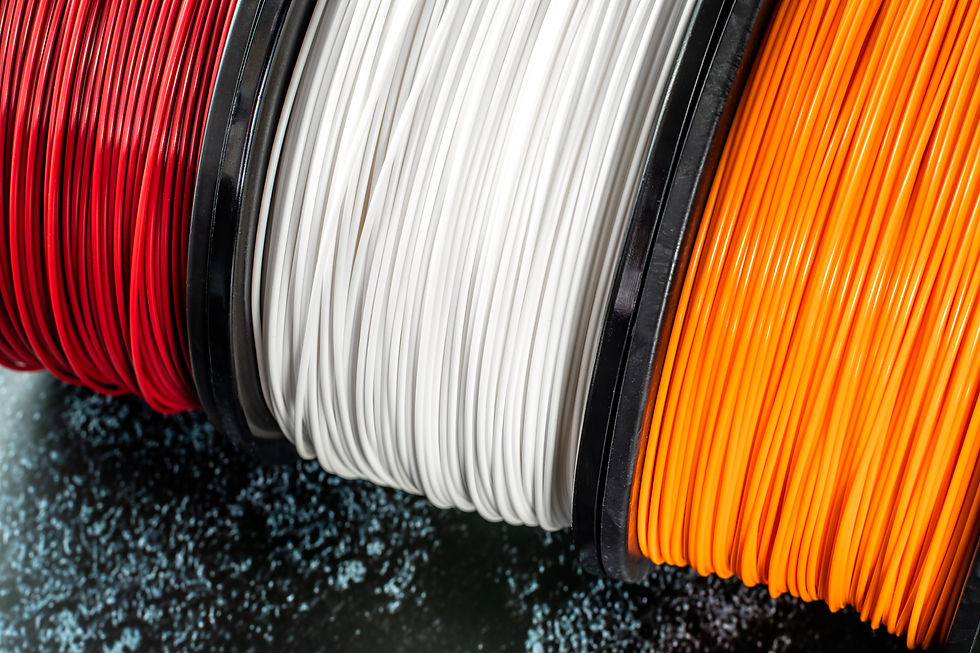Using Poor or Cheap Filament
- Joe Coogan
- Jan 30
- 2 min read

Using poor or cheap filament in a 3D printer can lead to several issues that affect print quality, printer longevity, and overall efficiency.
Here’s a breakdown of potential problems and how to mitigate them:
1. Print Quality Issues
Inconsistent Diameter: Cheap filaments often have variations in diameter (e.g., ±0.1mm or more instead of ±0.02mm), leading to extrusion inconsistencies, under-extrusion, and layer gaps.
Poor Adhesion: Some budget filaments don’t adhere well to the print bed or between layers, causing warping and weak prints.
Excessive Stringing & Blobbing: Impurities and additives in low-quality filament can cause uncontrolled extrusion, resulting in stringing and blobs on prints.
Color and Finish Issues: Inconsistent pigment mixing can lead to patchy or faded colors.
2. Printer Clogging & Maintenance Problems
Nozzle Clogs: Poorly made filaments may contain dust, dirt, or oversized particles, clogging the nozzle and requiring frequent cleaning or replacements.
Increased Wear on Components: Some budget filaments have unregulated additives that can accelerate wear on brass nozzles, extruder gears, and PTFE tubes.
Inconsistent Flow Rate: Variations in filament density and quality can cause extruder skipping and uneven layer deposition.
Can lead to blocked Nozzels and a ball of welded material around the print head leading to and expensive repair.
3. Mechanical & Structural Weakness
Brittle Prints: Cheap filaments often use subpar plastic mixtures, leading to brittle prints that snap or break easily.
Lower Heat Resistance: Some low-cost PLA or PETG filaments soften at lower temperatures, making them unsuitable for functional parts.
Warping & Shrinking: Inconsistent formulations can cause excessive warping, particularly with ABS or PETG.
4. Environmental & Health Risks
Toxic Additives: Some low-cost filaments may include harmful chemicals or heavy metals, which could release unsafe fumes when printing.
Poor Packaging & Moisture Absorption: Budget filaments are often poorly vacuum-sealed, allowing moisture absorption that leads to print defects and extruder issues.
5. Waste of Time & Material
Failed prints due to adhesion issues or weak filament often lead to wasted material, printer downtime, and frustration.
How to Avoid Issues with Cheap Filaments
Stick to Reputable Brands: Brands like Creality, Eckoo, eSun, Polymaker, or filament by your printer manufacture offer good balance between affordability and quality.
Check Tolerances: Look for a filament with a diameter tolerance of ±0.02mm.
Buy Properly Sealed Filaments: Ensure the filament is vacuum-sealed with desiccant to prevent moisture issues.
Perform Test Prints: Run small calibration prints before committing to a large project.
Store Filament Properly: Use airtight storage with silica gel to maintain quality or ideal in a Drybox Cabinet.




Comments